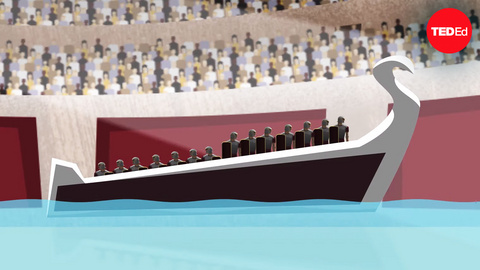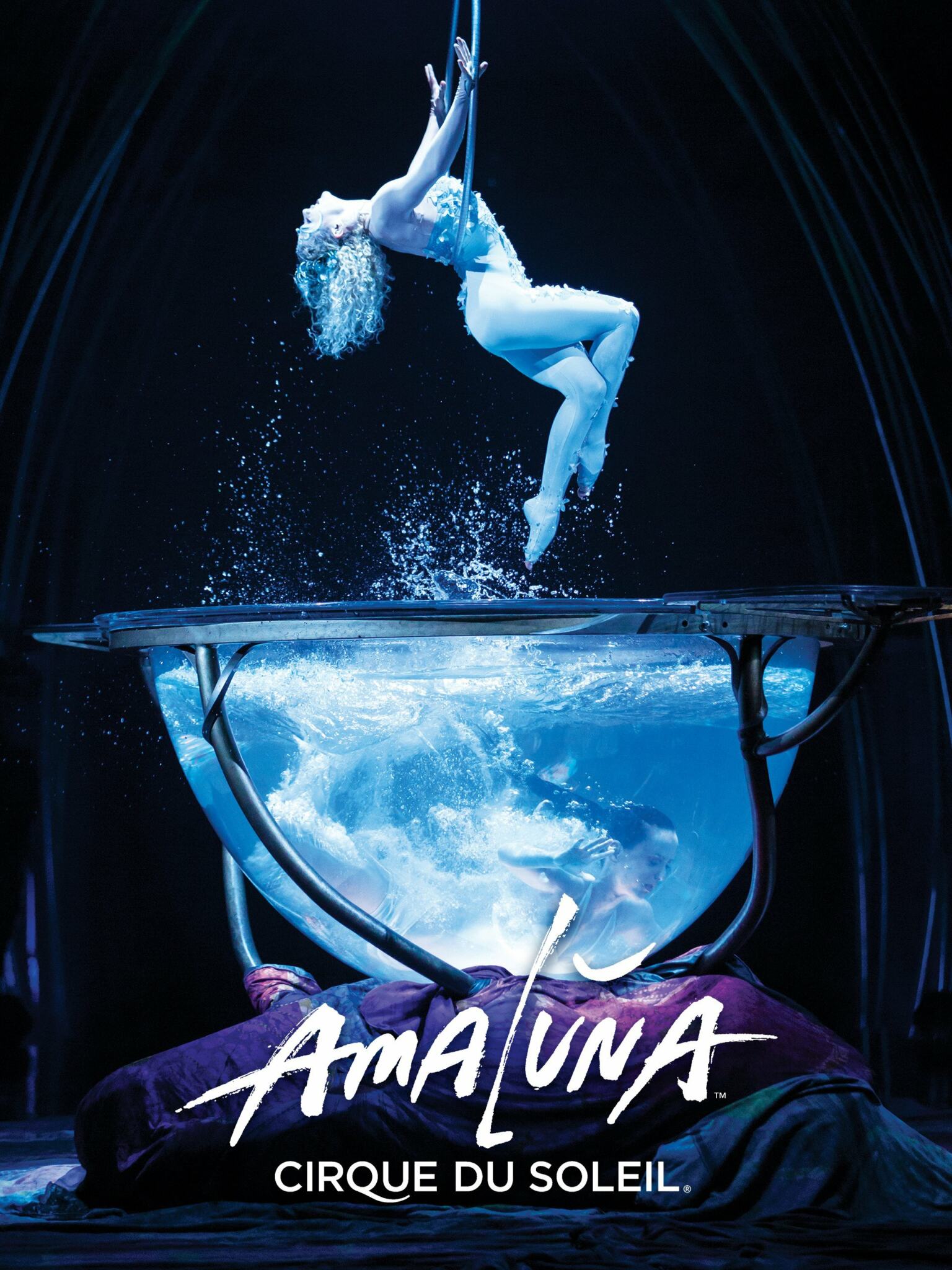Water Shows: Where Does the Water Come From?

Water Shows have a long history. The first documented swimming pool dates back to 2500 B.C. in Egypt! They used bricks and wooden planks to hold the pools together and gypsum plaster to make the construction watertight.
Romans used to fill the Colosseum with water and recreate epic naval battles. They are called “Naumachiae.” In fact, these representations used to take place in many other locations besides the Colosseum— the Naumachiae were part of the Roman tradition and could only be commanded by the Emperor. Not every water show was military; as a matter of fact, the Romans might have been the pioneers of synchronized swimming. There is a series of epigrams written by Martial (1st century A.D.) about the early shows in the Colosseum, and these include a reference to the Nereids; it is believed that these synchronized swimming performances were performed nude and at night, lit by torches.
As often happens with ancient civilizations, we have more questions than answers. We don’t really have enough information to say how they filled and emptied the arenas in such short periods of time, managing to keep doing events before and after the Naumachia.

We do know a few facts:
- They were often built near rivers or lakes, although sometimes the amphitheaters served as lakes and quarries too.
- They used aqueducts and pipes to fill them.
- The arenas had to be watertight.
- They used physics and gravity to empty them, most likely using geographical formations and the landscape to their advantage.
- How the Romans Flooded the Colosseum
Water is exciting to us as humans. First, with our being composed of approximately 60% water and needing it daily to survive, we relate to water. Second, it possesses a broad array of possibilities and challenges due to its physical and chemical characteristics.
For the purposes of this article, I have chosen to categorize shows into different categories depending on the way water is introduced in the show.
Water Basins
The “easiest” and most straightforward idea we have of a water show is to use the natural elements already at hand. By doing this, the challenges come from working with natural conditions such as water currents, salinity, and wildlife. An example of this would be Cirque Electrique, an acrobatic show housed at SeaWorld San Diego. SeaWorld made use of its geographic location and built an Amphitheatre in a little natural bay.

Evolving from our previous concept, we can think of man-made water basins that mimic natural conditions. Under these circumstances, it is easier to control water quality and temperature. EPCOT, a Disney Park in Orlando that “celebrates human achievement,” has a man-made lake with a perimeter of 1.2 miles, where it presents daily shows. It is really interesting how they use the water as a mirror to enhance and reflect the different kinds of lights around the lake.
In the tradition of Burlesque and Cabaret shows, water acts are a familiar thing as well. The aquatic element would be commonly introduced in the form of a big bowl or bathtub where acrobatic acts take place. Many of these production companies are easy to find, and you can hire them for your next event so you can experience the thrill of water shows from wherever you want. Being part of the circus tradition, Cirque du Soleil couldn’t let this magnificent idea escape their shows. We can find it in their “adults only” show in Las Vegas, Zumanity, and as part of the production Amaluna.
The latter was a touring show, which increases its level of complexity since all the technical parts— including the heating elements—had to travel with the show and had to be able to resist constant movement in trucks, boats, and trailers around the world. Often, the water was sourced on location, kept in a separate tank, and brought to temperature, then poured into the bowl with hoses. If you are curious, here you can see the technical requirements for one of the “water bowl” acts you could have at your next event; make sure to click on the “tech requirements” link after the description of the show.
Taking the idea of the tank to contain water, we have resident shows that have built their own pools with their own tanks. An example of this is La Perle, in Dubai. La Perle has a pool and two separate tanks to store water. This water is later pumped onto the stage causing the water level to fluctuate, giving the option to have a “dry” stage or a “wet” stage. The pumping and draining system allows these transitions to occur in 90 seconds. Take a close look here or at around min 08:45 of this video.
Water Basins with Lifts
A common idea of a water show is that of O or Le Reve in Las Vegas or the Aquatheatre onboard Royal Caribbean Ships, but if you think that shows with water and hydraulic lifts are a thing of this century, you will be impressed to know that the first water shows using hydraulic lifts go back to 1886 in Paris. In Blackpool, England, the Blackpool Tower Circus opened in 1894 and it is famous because of its “splashy finales.” A ticket these days costs around £25 with dinner included.
Among the first water-based shows that were built in Las Vegas, O used hydraulic lifts to transform the stage; the pool contained 1.5 million gallons of water. In the early stages of these developments, the idea (and real estate that came with it) of having separate tanks to contain water was not there yet, so the water used in these pools would stay in the pool tank. If the pool needed to be emptied for maintenance or sanitary reasons, the water would be disposed of through the sewage system. Le Reve was another show located in Las Vegas, and here you can see its lifts in full action.
Royal Caribbean Cruise Lines took that idea to the next level when they decided to have an outdoor venue where the water itself is a performer. The stage is transformed into a pool using lifts as well, but now we have at least two more constraints. Where is the water going to go when they need to empty the pool for maintenance, and how does the motion of the ship affect the water in the pool? The logistics and engineering here are taken to a different level, and seats for 700 people make it as big as some Broadway houses. Luckily with more pools on board and other performance venues, they have plenty of experience on how to treat water, where to store it if needed, and how to go about scheduling maintenance. From there, things just got bigger and bigger.
I want to take a moment to speak about the biggest water shows in the world which all happen to be located in Asia: The Dai Show, The Han Show (before and after), and The House of Dancing Water, all by director Franco Dragone (also the director of O, Le Reve and La Perle and some “drier” shows like Saltimbanco or Mystere from Cirque du Soleil).
Shows with water features
Adding water to a show does not have to mean constructing a whole new building. There are many shows that include water features and we can find them on tours as well as other kinds of live entertainment activities such as Theme Parks and Art Installations. Cirque Italia, Luzia, and even British artist Paloma Faith have all used rain-like features where some sort of giant shower curtain creates the effect on stage. The water is usually located in a receptacle adjacent to the stage but far away enough to be safe from all the machinery, and then collected under the stage. Random International has an art installation first featured at the Barbican in London and after having visited the MoMA in NYC, the Yuz Museum in Shanghai, and LACMA in Los Angeles, it has now found a home in Sharjah, UAE. This installation is activated using motion sensors that detect visitors’ movements allowing them to walk in a storm without getting wet.

If you have been following along with all the crazy videos in this article, you will find that besides having rain effects, many of these shows also have some sort of fountains, jets, or other ways in which water is propelled into the air. WET Design, a company based out of Los Angeles, has been the mastermind behind the conception and development of many of these features. They were first used in fountains commissioned by the private sector, in most cases, for the enjoyment of a broader public. You can listen to Peter Kopik, Head of Choreography at WET Design, in this interview, where we asked him about water, fountains, special effects, and how we can work with them while being environmentally conscious.
Game of Thrones’ “Winter is Here” by WET Design at Bellagio, Las Vegas
This article was originally published on TheatreArtLife.com.
Editor's Note: At StageLync, an international platform for the performing arts, we celebrate the diversity of our writers' backgrounds. We recognize and support their choice to use either American or British English in their articles, respecting their individual preferences and origins. This policy allows us to embrace a wide range of linguistic expressions, enriching our content and reflecting the global nature of our community.
🎧 Join us on the StageLync Podcast for inspiring stories from the world of performing arts! Tune in to hear from the creative minds who bring magic to life, both onstage and behind the scenes. 🎙️ 👉 Listen now!
